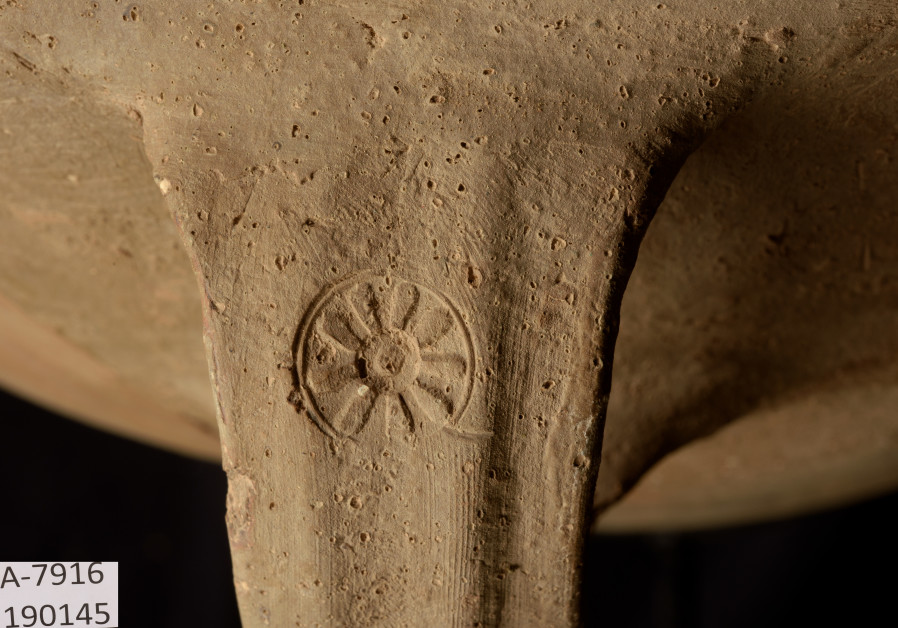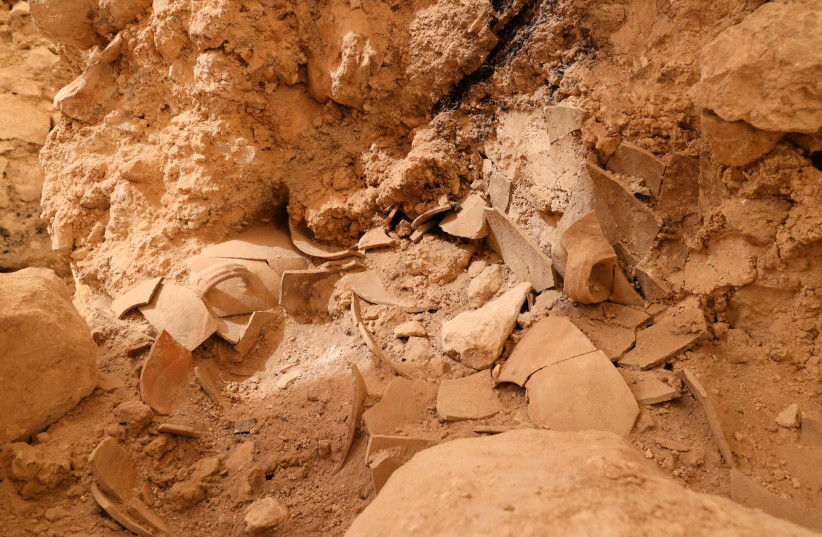 Jerusalem elite enjoyed wine with touches of vanilla in Kingdom of Judah
Jerusalem elite enjoyed wine with touches of vanilla in Kingdom of Judah
JUDITH SUDILOVSKY
Researchers were recently surprised to discover organic residues of the exotic, expensive (even until today) spice on wine jars unearthed during excavations in the City of David.

Modern-day wine lovers are not the only ones who enjoy a few vanilla notes in their luxury wines.
Researchers from Tel Aviv University and the Antiquities Authority (IAA) were recently surprised to discover organic residues of the exotic, expensive (even until today) spice on wine jars unearthed during excavations in the City of David National Park, located in Jerusalem’s Silwan neighborhood.
They say the discovery indicates that the wine was enriched with vanilla, and “fantastically” illustrates which luxury products arrived to Jerusalem, possibly from India and is environs, thanks to its strategic location along the international trade route.
The process of “oaking” – the aging of wines in barrels made from oak – which has been around since Roman times imparts an understated vanilla note to wine due to the vanillin chemical compound found in oak. However, the Israeli researchers say their analysis of the residue found three different molecules, which together indicate a fingerprint from vanilla itself, leaving no doubt of the origins of the residue.
Their study, recently published in the scientific journal Plos One, describes the results of chemical tests that identified the remnants of these molecules, which have been preserved in the tiny spaces on the side of the pottery vessels.

“Vanilla markers are an unusual find, especially in light of the fire that occurred in the buildings where the jars were found,” said Ayala Amir, a doctoral student in the Department of Archeology and Ancient Near Eastern Cultures at Tel Aviv University. “The results of the analysis of the organic residues allow me to say with confidence that the jars contained wine and that it was seasoned with vanilla.”
IAA director Eli Eskozido noted that new scientific tools continue to contribute information to the archaeological studies of the past.
The discovery of vanilla is apparently related to an international trade route that crossed the Negev during the seventh century BCE, initially under the auspices of the Assyrian Empire and later likely under their heirs, the Egyptians, and possibly even the Babylonians, according to the researchers.
The wine jars, dating to the days of King Zedekiah – the end of the glory days of the Kingdom of Judah – were discovered inside storage rooms of buildings in two different archaeological excavations in the City of David. The two buildings unearthed in the excavations were destroyed during the Babylonian obliteration of Jerusalem in 586 BCE. The jars were discovered smashed inside the rooms, under a collapsed building.
One excavation, conducted by the IAA, is located on the eastern slopes of the City of David hill. Another excavation, under the joint management of the IAA and Tel Aviv University, was conducted in the Givati Parking Lot, west of the hill.
The study examined eight jars from both buildings, and clear evidence was found in all of them for wine storage, according to the IAA.
The finds, including the vanilla used in the wine, indicate that the elites connected to the administrative seat of the Kingdom of Judah living in the neighborhoods of the area were enjoying the good life, according to Dr. Yiftah Shalev.

Shalev’s excavation, together with Prof. Yuval Gadot in the Givati Parking Lot, revealed a set of more than 15 jars in a ground floor easternmost room that might have been a wine cellar in an impressive two-story building. The archaeologists believe the building might have served as a bureau of senior officials in the kingdom.
Other vessels for storing liquids, including a very large one, were also found in the room that was so crowded that researchers said it would have been very hard for people to move around inside it.
“These finds tell us that the residents of Jerusalem in the late seventh century BCE in this area were people of means, with money, who were connected to international trade and the South Arabia trade,” Shalev said. “They could allow themselves the prestigious things of life that were available then, and were connected to the trends of the day. I don’t know what the wine tasted like then, but it certainly was considered high quality at the time.”
Social events and ceremonies that included drinking wine were also common then in many other cultures in Greece and Eastern empires. It is mentioned numerous times in the Bible, such as in Psalms 104:15, where God is blessed as the creator of “wine, which cheers man’s heart,” and in Amos 6:1-7, as the Prophet Amos rebukes “the complacent in Zion… You lie on beds adorned with ivory and lounge on your couches… You drink wine by the bowlful.”
Seal impressions in the shape of a rosette appear on the handles of some of the jars, indicating that they and their contents were part of the royal administration of the Kingdom of Judah, the researchers said, and that the number of jars and impressions on them point to the economic importance of wine, and the drinking culture, as a tool for expressing status and power.
“These jars were part of the taxation system common throughout Judea in the seventh century BCE,” said Shalev.
Zawartość publikowanych artykułów i materiałów nie reprezentuje poglądów ani opinii Reunion’68,
ani też webmastera Blogu Reunion’68, chyba ze jest to wyraźnie zaznaczone.
Twoje uwagi, linki, własne artykuły lub wiadomości prześlij na adres:
webmaster@reunion68.com
